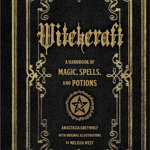FREE: 1896: The Great Campaign

A member of Listia gave this away for free!
Do you want FREE stuff like this?
Listia is 100% Free to use
Over 100,000 items are FREE on Listia
Declutter your home & save money

"Listia is like EBay, except everything is free" - Los Angeles Times

"An Awesome Way To Give And Get Free Stuff" - Michael Arrington, TechCrunch
This Stuff is Free Too:

FREE

FREE

FREE

FREE

FREE
The listing, 1896: The Great Campaign has ended.
Loyal Publishing Co., 1896, Pronounced external wear, backstrap missing top and bottom. No interior flaws, binding sound (repaired at some point with rubber cement.)The United States presidential election held on November 3, 1896, climaxed an intensely heated contest in which Republican candidate William McKinley defeated Democrat William Jennings Bryan in one of the most dramatic and complex races in American history.
The 1896 campaign is often considered to be a realigning election that ended the old Third Party System and began the Fourth Party System.[1] McKinley forged a coalition in which businessmen, professionals, skilled factory workers, and prosperous farmers were heavily represented. He was strongest in cities and in the Northeast, Upper Midwest, and Pacific Coast. Bryan was the nominee of the Democrats, the Populist Party, and the Silver Republicans. He was strongest in the South, rural Midwest, and Rocky Mountain states. Bryan's moralistic rhetoric and crusading for inflation (based on free silver) alienated German American voters. Turnout was very high, passing 90% of the eligible voters in many places.
For three years the nation had been mired in a deep economic depression, marked by low prices, low profits, high unemployment, and violent strikes. Economic issues, especially silver or gold for the money supply, and tariffs, were central issues. Republican campaign manager Mark Hanna pioneered many modern campaign techniques, facilitated by a $3.5 million budget. He outspent Bryan by a factor of five. The Democratic Party's repudiation of the Bourbon Democrats (their pro-business wing, represented by incumbent President Grover Cleveland), set the stage for 36 years of Republican control of the White House, interrupted only by the two terms of Democrat Woodrow Wilson.
1896: The Great Campaign is in the Books | Other Books category

